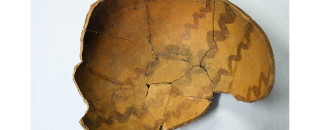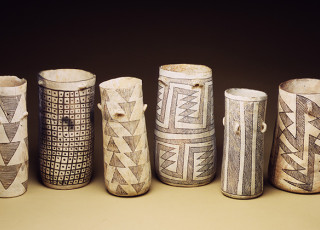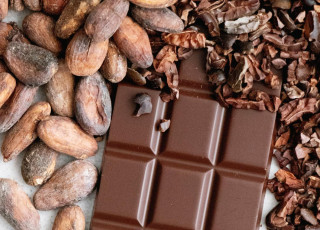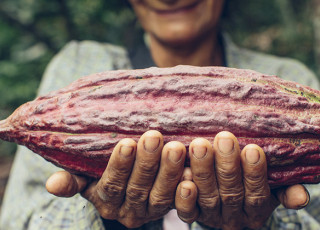Utah’s Ancient Cacao: A Surprising Find
By Michael Mozdy
After evidence of cacao use was found in Chaco Canyon, New Mexico (read Cacao in Chaco Canyon), a researcher from the University of Pennsylvania named Dorothy Washburn decided to examine some artifacts held in Harvard University’s Peabody Museum. These artifacts included jars, pitchers, and a series of shallow bowls originally found in southeastern Utah, at an Ancestral Puebloan site called Alkali Ridge.
Alkali Ridge Site 13, located east of Blanding, Utah, was settled about 750 A.D. during a period of transition. Ancestral Puebloan peoples began to live in larger villages and construct aboveground rooms, but used pit houses, too. Alkali Ridge was like many other Ancestral Puebloan villages in the Four Corners region. People there grew corn, used stone tools, made beautiful pottery, and traded with neighboring villages.
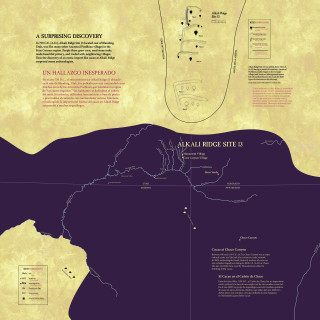
The objects Washburn tested date back to 780 A.D., over two centuries before the Chaco Canyon vessels. Amazingly, she found theobromine and caffeine on 75% of the objects she tested. Archaeologists were surprised by the discovery of an exotic import like cacao - normally reserved for the social elite in Mayan and Aztec cultures - on a wide array of everyday objects in a small village.
An important part of this story is that at this time, potters in villages around Alkali Ridge began producing a thin-walled red highly-polished red-on-orange pottery with bold geometric designs pottery unlike any other in the region. This pottery is called Abajo red on orange. Other pottery from the area is black-on-white, with thicker walls.
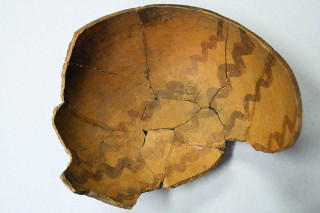
Abajo red on orange pottery. © NHMU
Washburn argues that the geometric designs relate to those found in early corn farming cultures from Mesoamerica. Taken with the chemical analysis from the pottery, her conclusion is that the bowls and the use of cacao are both the result of a migration of people from Mesoamerica.
|
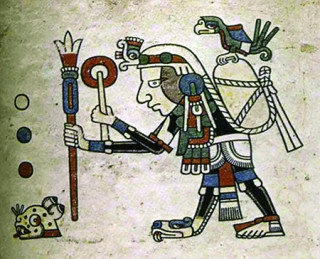
|
Some scientists argue that there are problems with the Washburn’s findings. First, they feel that 75% positive tests is simply too high since there is no other record of cacao use by the ancestral Puebloans, such as excavated seed pods or specific artwork about cacao.
Second, the chemical signature of cacao is theobromine to caffeine in a 6:1 ratio and theobromine to theophylline in a 10:1 ratio. None of the tested pottery conformed to these exact ratios. What’s more, there may be another plant, a species of holly used for the “black drink” by native peoples in the Southeastern U.S. The ratio for the holly is 2:1, caffeine to theobromine, which was not found either. Washburn explains these anomalies in her paper by showing how she tested modern Pueblo vessels spiked with differing levels of these compounds. They found that the composition of the clay changed the results of the test and theobromine always tested lower than expected.
One last important note is that Washburn used a different testing technique than what was used to find cacao on the Chaco Canyon vessels – instead of pulverizing a part of the objects, she washed out the interior of the vessels with water and analyzed the rinse water. A year later, Washburn published another paper more fully discussing and defending her testing techniques and the anomalies found in testing museum samples (for instance, many objects in museums have background levels of theobromine and caffeine, apparently due to airborne contamination).
The result of cacao discoveries in the Southwest is that archaeologists have had to re-examine some long-held assumptions about the isolation of ancient cultures in this region. Between the Chaco Canyon and the Alkali Ridge discoveries, a picture of extensive trade and perhaps even migration has emerged. The map below shows how ancient cultures bordered and overlapped throughout what is today the U.S. and Mexico, making cross-cultural trade and import not just likely, but perhaps more common than ever thought.
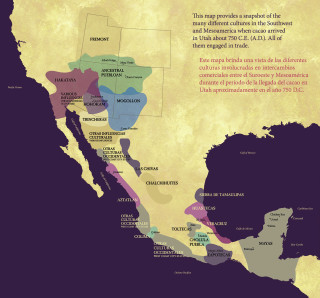
Here at NHMU, our researchers have been hard at work examining our collection of Ancestral Puebloan pottery as well as examining artifacts found in the field in Southeastern Utah. Read about our work in The Utah Chocolate Story.
Michael Mozdy is a Digital Science Writer for The Natural History Museum of Utah, a part of the University of Utah in Salt Lake City. Our mission is to illuminate the natural world and the place of humans within it. In addition to housing outstanding exhibits for the public, NHMU is a research museum. Learn more.
